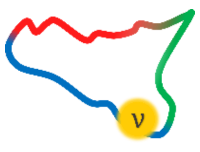Speaker
Description
Neutrino mass ordering (NMO) is a fundamental problem that remains unresolved, with significant implications for interpreting the origin of neutrino mass, calculating the half-life of neutrinoless double-beta decay and understanding the cosmic structure formation. Current experimental approaches to determine NMO include: (1) Studying vacuum oscillations of reactor neutrinos; (2) Studying matter-induced oscillations of atmospheric or accelerator neutrinos; (3) Measuring mßß, mß, ∑ of neutrinos; (4) Investigating the collective oscillation effects in core-collapse supernovae neutrinos. The current experimental hints of NMO come from T2K, NOvA, Super-Kamiokande and IceCube experiments.
The Jiangmen Underground Neutrino Observatory (JUNO), designed to determine the NMO and investigate a broad range of physics topics, is scheduled for completion this year. JUNO features a 20 kton liquid scintillator (LS) detector surrounded by 35 kton of pure water, equipped with 17,612 20-inch and 25,600 3-inch photomultiplier tubes (PMTs). This configuration enables an unprecedented energy resolution of 3% at 1 MeV and a daily detection rate of 57.4 reactor neutrinos at a baseline of 52.5 km. With an expected exposure of 6.5 years, JUNO will achieve a median sensitivity of 3σ to reject the incorrect NMO hypothesis. Beyond reactor neutrinos, JUNO possesses significant capabilities for studying atmospheric, solar, geo- and supernova neutrinos.
This talk presents the global landscape of NMO sensitivity, the JUNO's design principles, current construction and commissioning status and physics prospects.

